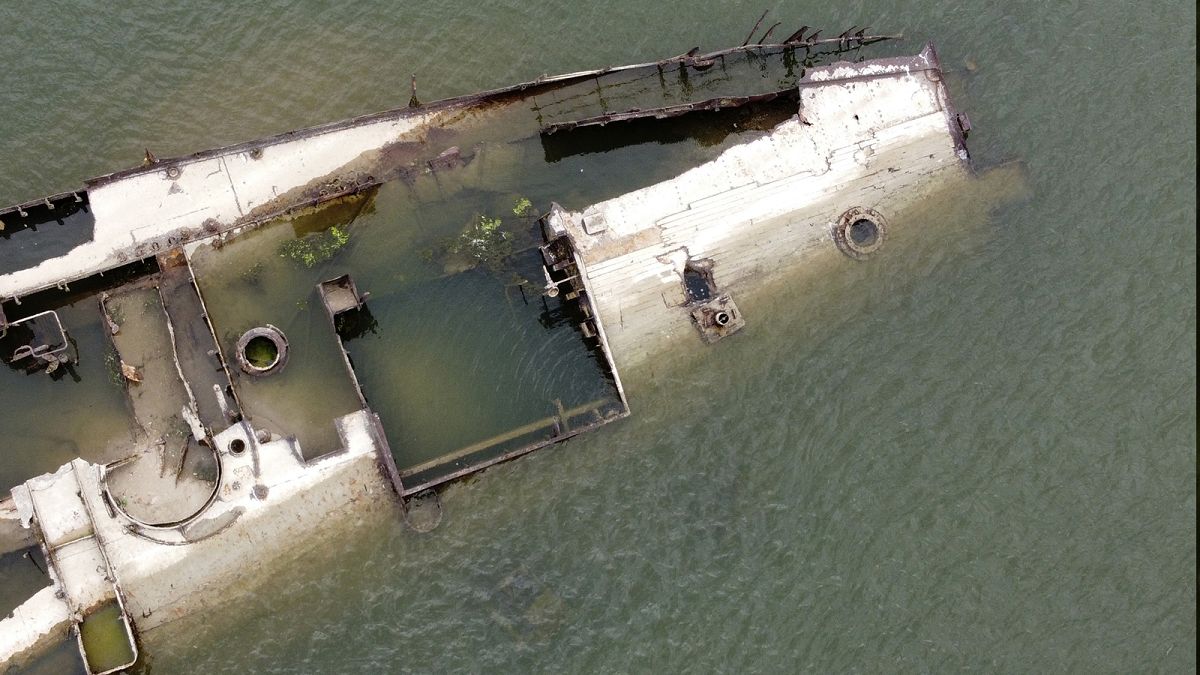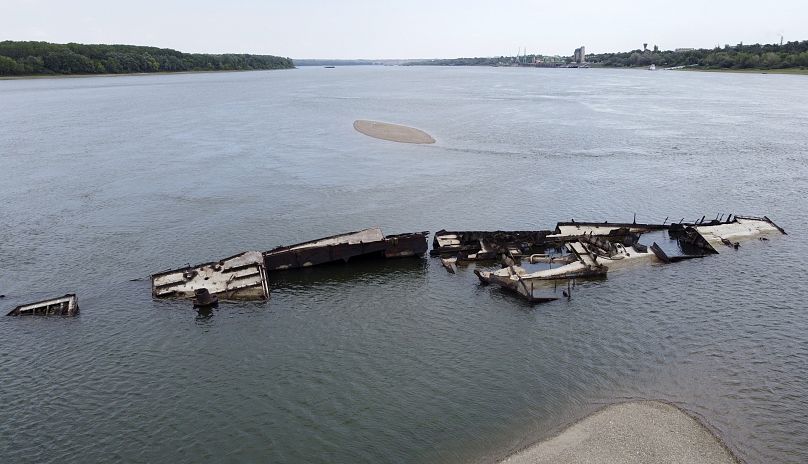Historians say up to 200 Nazi German warships were scuttled in September 1944 in Prahovo, Serbia. Now, authorities aim to remove 21 sunken vessels to make the Danube less hazardous to traffic.
The worst drought in Europe in decades in Serbia has not only affected agriculture. It has also revealed almost forgotten relics of World War II in the shape of German battleships emerging from the Danube.
The ships, some still laden with munition, belonged to Nazi Germany's Black Sea fleet that was deliberately sunk by the Germans as they retreated from Romania as Soviet forces advanced.
The unusually hot weather across Europe this summer -- which scientists have linked to global warming -- and other factors have affected the Danube, Europe's second-longest river that flows through 10 nations. Authorities in Serbia have used dredging to keep vessels moving.
Historians say up to 200 German warships were scuttled in September 1944 near Prahovo in the Danube gorge known as The Iron Gate on the orders of the fleet's commander as they came under heavy fire from the Soviets.
The idea behind the deliberate sinking was to at least slow down the Soviet advance in the Balkans. But it didn't help as Nazi Germany surrendered months later, in May 1945.
The wrecks appearing from the depths are an impressive sight, but they have caused decades of trouble for those using the river, and now the Serbian government, with EU support, is planning to do something about them.
Some of the wrecks were removed from the river by the Communist Yugoslav authorities right after the war.
But most of them remained, hampering shipping, especially in summer when water levels are low. For years there were plans to take the ships out of the muddy waters, but the operation was considered too risky because of the explosives they carried, and there were no funds to do it until recently.
Now, the EU and the European Investment Bank have agreed to provide loans and grants to finance the operation to remove some of the vessels near Prahovo to improve the traffic capacity of the Danube.
The total cost of the operation is estimated at €30 million, of which about €16m are grants.
"These vessels have been sunk and they have been lying on the river bed ever since," the EU ambassador to Serbia, Emanuele Giaufret, said during a recent trip to the wreckage site.
"And this is a problem. It's a problem for the traffic on the Danube, it restricts the capacity to move, it's a hazard because certain vessels still contain unexploded ordnance."
Accompanying Giaufret was Alessandro Bragonzi, the head of the European Investment Bank in the Western Balkans. He said the project consists of the removal of 21 sunken vessels.
"It has been estimated that more vessels are underwater, up to 40, but those that are currently impeding the fairway conditions of the Danube, especially during periods of low water level, are 21," Bragonzi said.
Experts say the salvage operation will consist of removing the explosive materials from the sunken vessels and then destroying the wrecks rather than dragging the ships out of the river.


